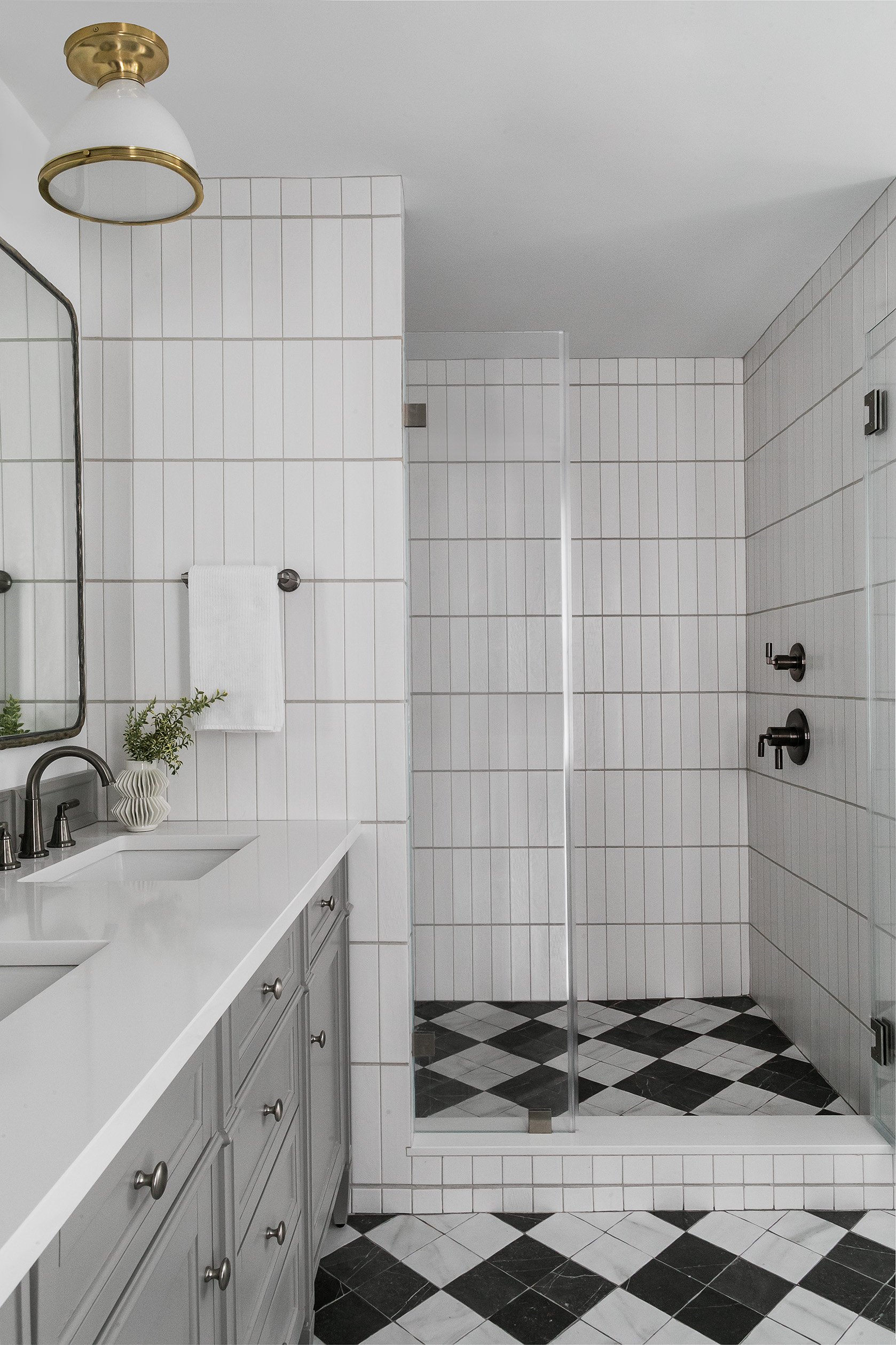Yes, in fact it’s highly encouraged! Mixing metals in interior design is a popular and effective strategy to add depth, interest, and layers to a space. When done thoughtfully, it can elevate the aesthetic appeal of a room and create a rich, nuanced look. Here are some tips for mixing metals successfully:
1. Choose a Dominant Metal
Hierarchy: Select one metal finish as the primary or dominant metal in your space. This will serve as the main color tone around which other metal accents will revolve.
Consistency: Using your dominant metal in several places creates a sense of cohesion. This could be in light fixtures, door hardware, or furniture pieces.
In this bathroom I actually mixed three different metals. The flooring helps unify the different tones so it feels cohesive
2. Incorporate Accent Metals
Contrast and Complement: Choose one or two accent metals that complement or contrast nicely with your dominant metal. For example, if your primary metal is warm (like brass or copper), you could select cooler accent metals (like chrome or stainless steel) for a striking visual balance.
Limit Choices: To maintain harmony and avoid clutter, it's generally advisable not to mix more than two or three different metal finishes in a single room.
In this bathroom the brass was used as an accent to bring some warm tones to the bathroom
3. Distribute Evenly
Spatial Distribution: Spread your metal finishes throughout the space to create a balanced look. Avoid clustering all elements of one metal in a single area.
Visual Balance: Use your accent metals in various decorative elements such as lamps, frames, or small furniture pieces to balance the visual weight across the room.
4. Match Finishes
Finish Styles: Pay attention to the finish of your metals (e.g., polished, matte, brushed). Metals with similar finishes can coexist more harmoniously, even if their colors differ.
Texture and Patina: Mixing textures can add depth to your space. For example, a polished finish might bring a touch of elegance, while a brushed or matte finish can contribute to a more subdued, sophisticated look.
5. Consider the Room’s Color Palette
Color Harmony: Metals should complement the room’s overall color scheme. Warm-toned metals like brass or gold work well with warm colors, while cool-toned metals like silver or chrome pair nicely with cool colors.
Neutral Backgrounds: Metals often stand out beautifully against neutral backgrounds, making them focal points without overwhelming the space.
6. Use Metals as Unifying Elements
Thematic Links: Use metals to tie together different elements within the space or across rooms for a cohesive home design. This could mean repeating the use of a specific metal finish in various rooms or furnishings.
7. Experiment with Accessories
Accessories as Test Grounds: If you're unsure about mixing metals, start with smaller accessories like vases, picture frames, or throw pillows with metallic accents. This low-commitment approach allows you to experiment with combinations before making larger changes.
Mixing metals adds a layer of sophistication and ensures that interior spaces feel curated and dynamic. It's an opportunity to express personal style and create an interior that feels both timeless and on-trend.


